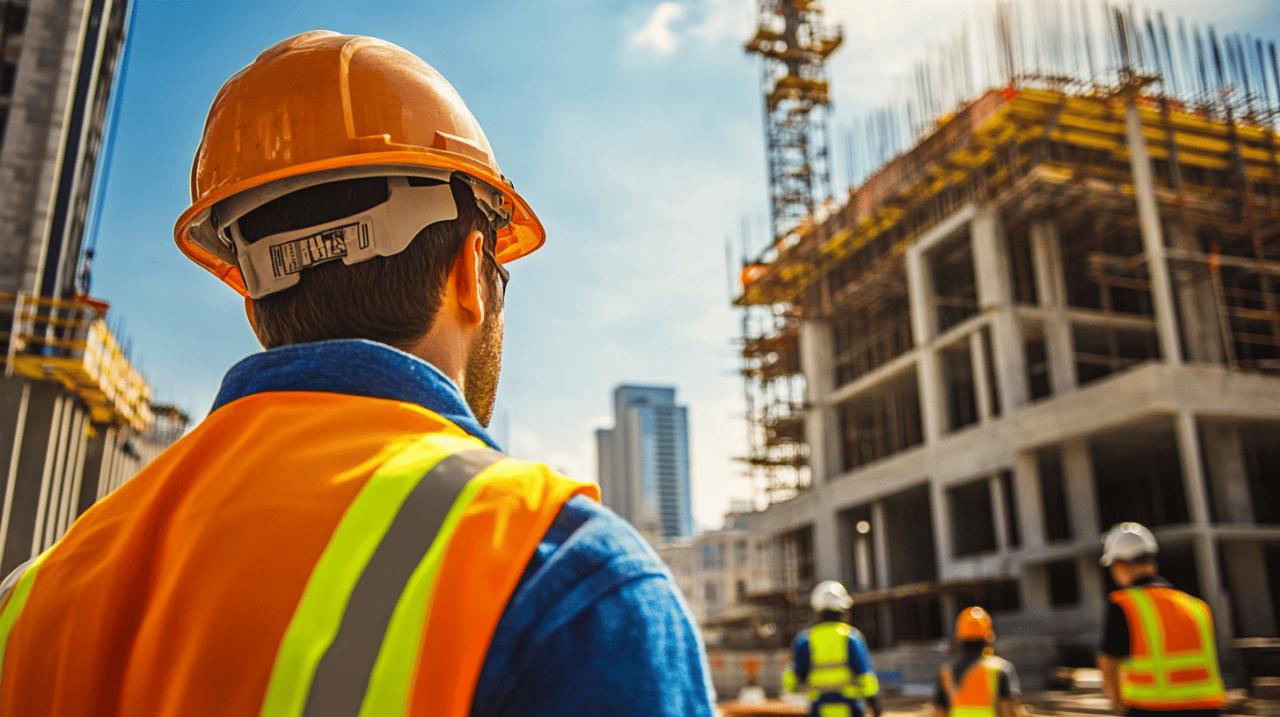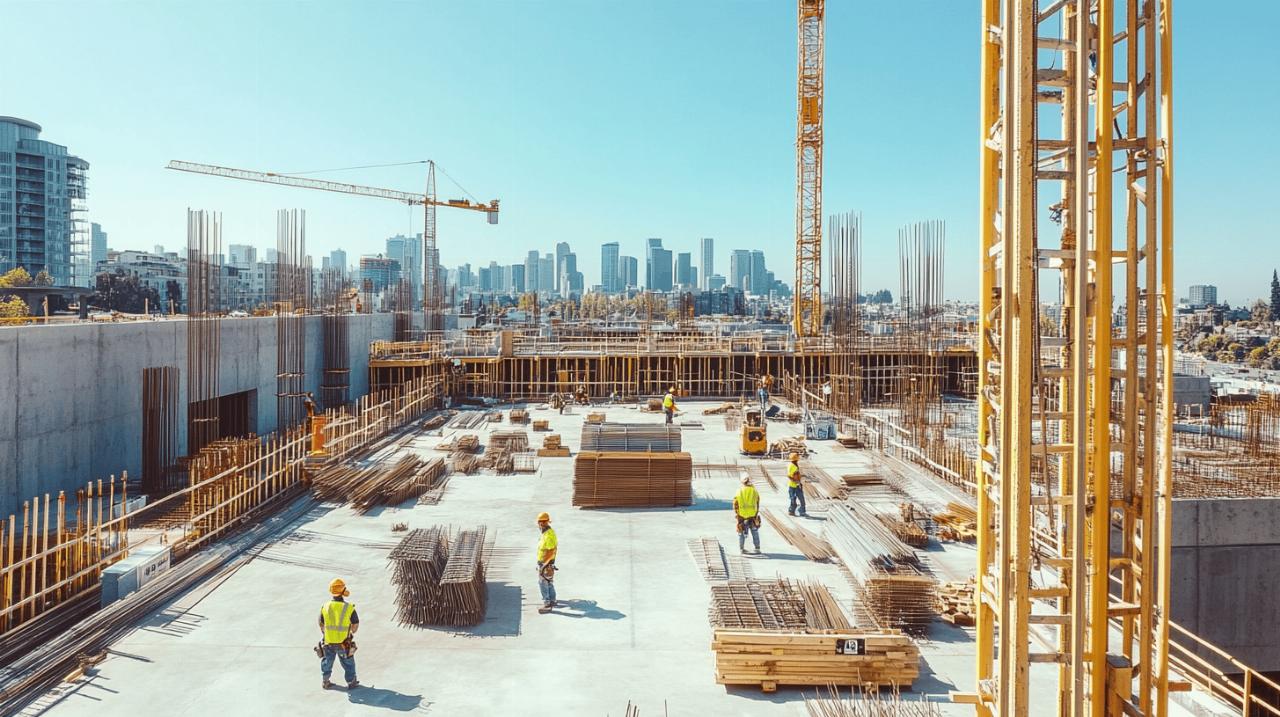Construction site panels serve as powerful billboards for your company, turning ordinary building sites into effective marketing platforms. When designed strategically, these panels do more than just mark your territory—they communicate your company's values, showcase your professionalism, and create lasting impressions on potential clients. This guide explores how to transform standard site hoardings into impactful brand assets that work around the clock to elevate your image while fulfilling practical safety requirements.
Creating strong brand identity through site panels
The construction site represents a golden opportunity to strengthen your brand presence in the physical world. Effective site panels serve as large-format advertisements that can significantly impact how your company is perceived by passersby and potential clients. Studies show that it typically takes 5-7 brand impressions for someone to remember your brand, making consistent site branding crucial. Furthermore, companies that present their brand consistently can experience a 10-20% increase in revenue, highlighting the importance of cohesive design strategies across all construction sites. Many companies overlook these opportunities, failing to leverage their site hoarding advertisements as part of a comprehensive marketing strategy. For expert advice on optimising your business growth through strategic branding, companies like those found at https://www.criterioselecta.it/ offer specialised consulting services tailored to construction industry needs.
Implementing consistent visual branding elements
Visual consistency across your construction site panels reinforces brand recognition and professionalism. Using your signature colour scheme can increase brand recognition by up to 80%, making this element particularly important. Your company logo should feature prominently on all panels, maintaining the same proportions, colours, and placement to build familiarity. Typography matters significantly too—select fonts that reflect your brand personality while ensuring readability from a distance. Consider creating a standardised template for all site panels that incorporates these branding elements in a balanced, visually appealing layout. This approach to construction branding ensures that each site becomes an extension of your overall marketing presence, working together with other brand touchpoints to create a cohesive impression.
Crafting clear, impactful messaging about your services
When developing the text content for your site panels, clarity and brevity are paramount. Most viewers will only glance at your hoarding for a few seconds, making concise messaging essential. Focus on communicating your core services, expertise, and values in straightforward language that resonates with your target audience. Avoid industry jargon that might confuse general passersby. Instead, highlight what makes your construction company unique—whether that's specialised expertise, years of experience, or commitment to sustainability. A compelling headline can capture attention, while supporting text should reinforce your brand positioning. Remember that outdoor advertising has a lower cost per impression compared to many other marketing channels, making it worth investing in professional copywriting that maximises impact.
Visual elements that enhance professional appearance
The visual impact of your site panels plays a crucial role in shaping public perception of your company. High-quality design communicates professionalism and attention to detail—qualities clients seek in construction partners. The trend in site signage is moving toward digitisation and sustainability, with more companies incorporating innovative visual elements that stand out. Custom graphics designed specifically for your panels create a more polished impression than generic templates or hastily assembled designs. Consider the viewing distance and sightlines when designing visual elements, ensuring they remain clear and impactful from typical viewing positions. The colours you choose should not only reflect your brand palette but also provide sufficient contrast for optimal visibility in various lighting conditions.
Incorporating high-quality project photography
Nothing demonstrates your capabilities more effectively than showcasing your previous work through professional photography. High-resolution images of completed projects or work in progress help potential clients visualise the quality of your craftsmanship. When selecting photographs, prioritise images that highlight your expertise in projects similar to the current construction site—this creates a natural connection between what passersby see and what you're building. Consider featuring before and after images if the project involves transformation of an existing space. Including photos of your team at work can also humanise your brand and demonstrate your company culture. These visual elements serve as powerful proof points that substantiate your written claims about expertise and quality, making your advertising design more credible and persuasive.
Balancing promotional content with safety information
While marketing is a primary function of site panels, they must also fulfil important safety requirements. Finding the right balance between promotional content and required safety notices demonstrates your commitment to responsible business practices. Incorporate mandatory safety warnings and information in a way that complements rather than competes with your branding. Use distinctive visual treatments to ensure safety information stands out appropriately while maintaining design coherence. This approach to site safety not only meets regulatory requirements but also communicates your company values. Consider dedicating specific panels or sections to safety information, creating a clear distinction between marketing messages and essential warnings. This thoughtful integration shows that your company takes both professional image and public safety seriously.
Practical considerations for effective site panels
Beyond design elements, the physical characteristics of your site panels significantly impact their effectiveness and longevity. Making informed choices about materials, construction, and installation ensures your investment continues to deliver value throughout the project lifecycle. The UK climate presents particular challenges for outdoor displays, with rain, wind, and temperature fluctuations potentially degrading poorly constructed panels. Planning for these conditions from the outset saves money and maintains your professional image. Consider the project timeline when selecting materials—longer projects justify more durable solutions, while shorter projects might be served by cost-effective temporary options. Environmental hoarding options are gaining popularity as they offer advantages of being safer, lighter, reusable and more environmentally friendly than traditional plywood hoarding.
Selecting durable materials for longevity
The choice of materials for your construction site panels directly affects their appearance and durability. For premium, long-lasting solutions, 3mm Aluminium Composite Material with lamination offers excellent weather resistance and visual quality. Standard options might use the same base material without lamination, which still provides good durability at a lower cost point. For shorter-term projects, 4mm Correx provides a more economical option while allowing for customisable sizes and graphics. Weather-resistant materials are essential in the UK climate to prevent fading, warping, or damage that could undermine your professional image. The initial investment in quality materials pays dividends through reduced replacement costs and consistent brand presentation throughout the project. Consider the environmental impact of your material choices as well, as sustainable options increasingly align with corporate social responsibility goals.
Strategic placement and installation techniques
Even the most beautifully designed panels fail to achieve their purpose if poorly placed or installed. Begin by surveying the site thoroughly to understand its surroundings, gradients, and elements, ensuring you have exact measurements for panel production. Consider visibility from key vantage points, including pedestrian walkways, roads, and public transport routes. Panels should be installed securely and professionally, as wobbling or misaligned hoardings convey carelessness—the opposite of the impression you want to create. Strategic illumination can extend the impact of your panels beyond daylight hours, capturing attention during evening commutes. For complex sites, create a comprehensive placement plan that maximises visibility while meeting security and safety requirements. Professional installation not only improves appearance but also ensures panels remain secure in adverse weather conditions.
Maximising communication value on site panels
Your construction site panels represent valuable communication real estate that can serve multiple marketing objectives simultaneously. Beyond simple brand awareness, these displays can generate leads, provide information, and direct interested parties to additional resources. Research indicates that 98% of the UK population see outdoor advertising each week, and 26% of consumers visit a website after seeing a billboard, highlighting the potential reach and effectiveness of well-designed site panels. By approaching your panels as integral components of your marketing strategy rather than mere site necessities, you can significantly enhance their return on investment. Consider each panel as part of a sequential storytelling opportunity, particularly on sites with extensive street frontage where viewers might pass multiple panels in sequence.
Displaying clear contact information and digital touchpoints
Make it easy for interested viewers to take the next step by including prominent, unambiguous contact details on your site panels. Your website URL should feature clearly, ideally as a memorable domain that viewers can recall later. Including QR codes linked to your website or specific landing pages creates an immediate connection between physical and digital experiences, allowing interested parties to learn more instantly. Social media handles encourage ongoing engagement and provide additional channels for relationship building. For lead generation purposes, consider incorporating specific contact points for different services or enquiry types. Phone numbers should be easily readable from typical viewing distances, and email addresses should be simple and professional. These digital touchpoints extend the effectiveness of your outdoor advertising by creating pathways to deeper engagement.
Tailoring Panel Design to Target Audience and Location
One size does not fit all when it comes to site panel design. The demographics, interests, and concerns of the local community should influence your messaging and visual approach. A residential development in an upscale neighbourhood might benefit from sophisticated, lifestyle-focused imagery, while an industrial project might emphasise technical capabilities and efficiency. Consider the cultural and linguistic characteristics of the area when crafting messages, ensuring they resonate with local audiences. The physical context matters too—panels visible primarily to vehicle traffic require larger, bolder elements than those mainly seen by pedestrians. This targeted approach to construction site marketing demonstrates awareness and respect for the community context, fostering positive community relations. Analysing the specific location allows you to highlight aspects of your project that address local interests or concerns.
Maintenance and compliance requirements
The ongoing care of your site panels directly reflects on your company's attention to detail and professionalism. A pristine, well-maintained hoarding suggests similar care in your construction work, while damaged or dirty panels quickly undermine brand perception. Beyond aesthetics, compliance with local regulations is essential to avoid penalties and project delays. Different localities have varying requirements regarding size, content, illumination, and placement of construction site signage. Staying informed about these regulations demonstrates your company's commitment to responsible business practices. Establish clear responsibilities for panel maintenance within your project management structure, ensuring regular attention throughout the project lifecycle.
Establishing regular cleaning and upkeep protocols
Develop a systematic approach to panel maintenance that includes regular cleaning, inspection for damage, and prompt repairs when needed. In urban environments, panels can quickly accumulate dust, grime, and occasionally graffiti, requiring more frequent attention. Create a maintenance schedule appropriate to the site location and environmental conditions, with more frequent cleaning in high-pollution areas or during seasons with increased debris. Train site personnel to report damage or defacement immediately, allowing for swift remediation. Consider applying anti-graffiti coatings to panels in vulnerable locations, making cleanup easier if vandalism occurs. Keep spare graphics components on hand for quick replacement of damaged sections rather than leaving compromised panels in place. This proactive approach to maintenance ensures your brand visibility remains strong throughout the project duration.
Navigating local regulations and planning requirements
Construction site panels are subject to various regulations depending on location, size, and content. Some areas require planning permission for larger hoardings, while others have specific guidelines regarding illumination to prevent light pollution or driver distraction. Safety regulations may dictate specific information that must be displayed, such as emergency contact details or hazard warnings. Familiarise yourself with local advertising standards that might restrict certain types of claims or require specific disclaimers. Working with experienced suppliers who understand the regulatory landscape can help navigate these requirements efficiently. When planning international projects, be aware that regulations vary significantly between countries and even between municipalities within the same country. Compliance not only avoids penalties but also demonstrates your company's professional approach to all aspects of project management.







